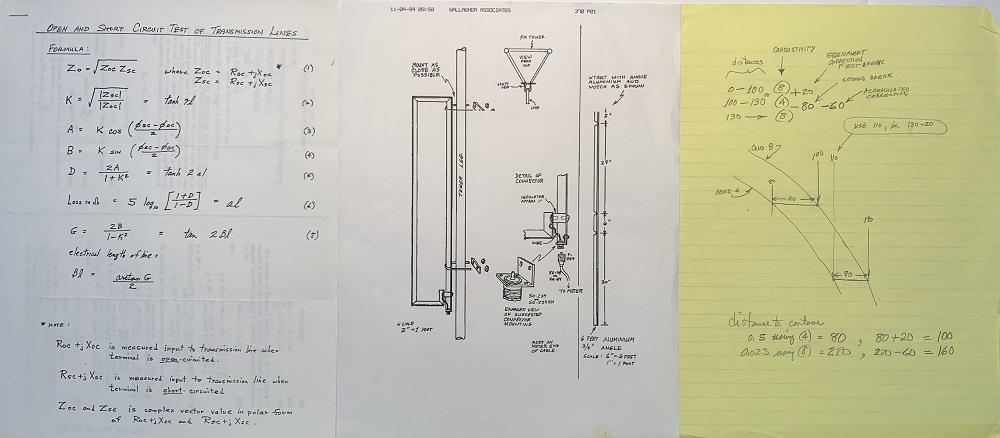It was 1980 and I was on top of the world, a kid in my early 20s and the chief (and only) engineer of a top-rated pop FM station in Dallas.
My office was on the top floor of a bank building and I had a great view out the glass wall in front of my desk. I had all the latest equipment, great studios, a brand-new main transmitter site, a nice paycheck, a company car and a bunch of trade to burn. Could it get any better? No doubt about it, I had arrived.
The past 40 years have made the memories a little fuzzy at times, but I’m pretty sure I thought I knew it all back then. I must have known it all, or I wouldn’t have had that job, office and all the perks, right?
One day, my DOE, Gary Hess, came into my office. He wanted me to do an allocation drop-in for an East Coast market. A what? How does that work? Obviously there was at least one thing I didn’t know.
Other memories may be hazy, but I have a clear recollection of Gary down on the floor of my office with me, topo maps spread out under a straight edge, showing me how to plot the chosen reference coordinates. Then he showed me how to do a channel study, how to lay out eight radials and how to calculate the average terrain elevation.
I did what Gary showed me, he filed the FCC paperwork, and the drop-in was successful. That allocation is still in place to this day, as is the Class A FM station he filed for after teaching me how.
It’s been a lot of years, but I’ve never forgotten that lesson. More importantly, I’ve never forgotten that Gary took the time to show a young, know-it-all kid something new, providing a skill that would serve me well for many years to come.
How Does That Work?
Fast-forward almost a decade from that point. I was older, presumably wiser, and infinitely more aware of what all I didn’t know. Except for maintaining a few simple, mostly non-directional AM transmitter sites, all my experience to date had been television and FM, but I had a new 5 kW four-tower AM build-out dropped right into my lap with a deadline and a budget. Oh boy.
I knew virtually nothing about AM antenna systems, phasors, ATUs and sample systems. Certainly I understood the basic principles from what I had learned in engineering school many years prior, but I had never put that into practice in any way. So I was really sweating it.
For many years, my company had used Gallagher & Associates as its consulting engineering firm, and Charlie Gallagher was a good friend. When I dropped the bomb of the AM antenna project on Charlie, he didn’t miss a beat. He immediately began teaching me the things I needed to know, taking me step by step through the process.
Charlie showed me how to do a phase budget, then how to design a phasing and coupling system. He taught me how to design a power divider, the advantages and disadvantages of various designs, and how to choose real-world components for the system. Within a few short weeks he had shown me how to calculate driving point impedances and leg values in tee-networks.

With Charlie’s help and calculations and diagrams flying back and forth on our newfangled fax machines, I got that site built, tuned up, proofed and licensed — and Charlie never set foot on the property. He gave me the tools — and the confidence — to do the job myself. That station and site are still on the air all these decades later.
The learning process didn’t stop there. Charlie continued to teach me about AM allocations, how to do groundwave equivalent distance calculations, how to make and apply conductivity measurements and how to do skywave night limit studies. After that came directional antenna design. I still have a drawer full of fading thermal fax paper with Charlie’s notes and examples, and occasionally I still refer to them.
In the years that followed, I did a lot of AM allocation and antenna projects completely on my own. I learned something, sometimes a lot, from each of them. But I still didn’t know it all.
Somewhere along the way, Charlie introduced me to John Furr, another of his protégés who was director of engineering for Clear Channel. John and I became friends and often swapped thoughts and ideas. John was a programmer, I was more of a hacker (in the sense that I tried to write code).
I learned a lot from John, and eventually we became business partners. John passed away several years ago, but the company he started and in which I remain managing partner still survives.
Passing it On
John, like Charlie, had a heart for teaching people our trade, and once or twice a year he would host an immersion symposium at a San Antonio hotel, bringing in Charlie, other presenters and me. We would, for a very reasonable cost, teach attendees how to do AM, FM and TV allocations and a whole lot more.
I still have the notebooks we used and handed out at those symposiums. To this day I occasionally hear from people who attended. The reality is that there was at the time nowhere else to get that kind of training. I was honored to be a part of the process.
Fast-forwarding again to recent years, instead of learning about scary AM allocations and networks, I find myself learning about firewalls, routing, AoIP, multicasting, VLANs, switches, protocols and other scary stuff.

It occurred to me recently that the learning never stops, not really, or it shouldn’t, not if we’re to keep up. With technology changing so rapidly, I find that knowledge to be perishable.
For some, sadly, the learning does stop, and for those folks, skills quickly become dated and stale. Their value in the industry is low, or at least lower than that of those who work at keeping up. I occasionally encounter folks like that. With some, it’s as if they are unaware there is anything beyond the things they do know. They’re missing out altogether on a whole world of opportunity.
Coming out of a pandemic, the broadcast industry will be leaner and more efficient than ever. We’re operating in a whole new way, often remotely and certainly with fewer warm bodies at the controls. More is required of engineers, and a higher skill set is needed than perhaps any time in the past. Those without those skills will find themselves at a significant disadvantage.
Which brings me to a point: There have never been more opportunities for continuing education than there are right now, and you don’t have to travel to a hotel in San Antonio to take advantage.
There are live and on-demand webinars on timely topics available from many sources, including the Society of Broadcast Engineers. There is, in my opinion, no better bargain out there than the SBE’s “Member Plus” membership level, which provides unlimited access to the entire archived catalogue of SBE educational webinars and all new webinars produced during the membership year.
Manufacturers often offer product-specific training that has broader application, many times in webinar format. White papers on timely topics abound and are often available online, and we strive to make the cream of that crop available in these pages.
In short, there is no excuse for not continuing to learn in this business. The opportunities are many, and your very livelihood may depend on it. So make it a point to try and learn something new or expand your skills every day. Never stop learning!
And perhaps more importantly, make an effort to pass on what you learn to others. I am forever grateful to Gary, Charlie, John and others who took the time to show me some new things. Don’t miss an opportunity to be a mentor to someone else!
W.C. “Cris” Alexander, CPBE, AMD, DRB, is director of engineering at Crawford Broadcasting and the technical editor of Radio World Engineering Extra. Read past issues of RWEE and RW.







